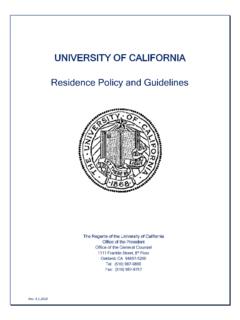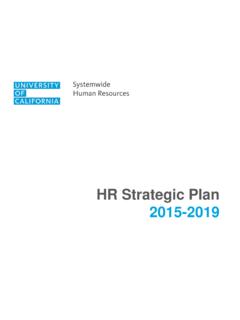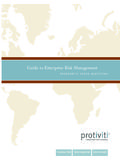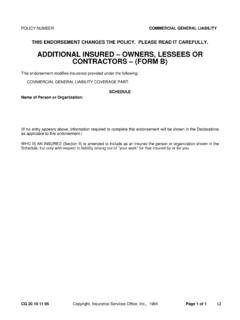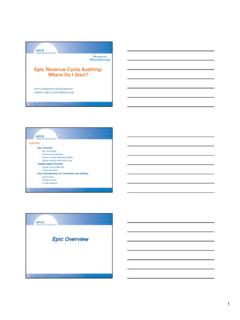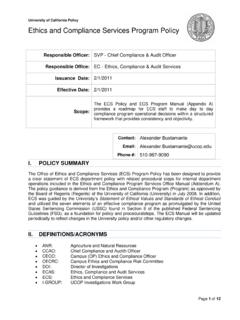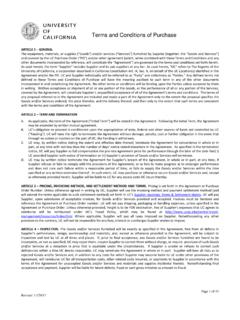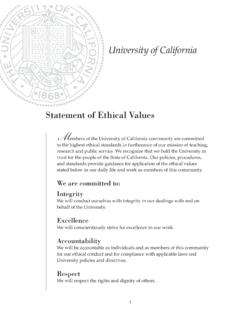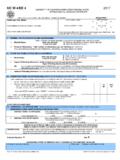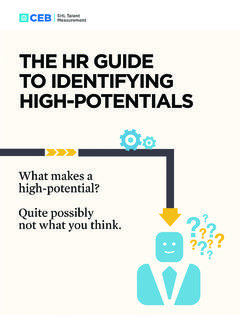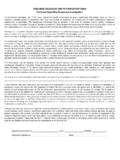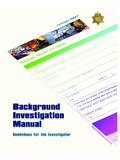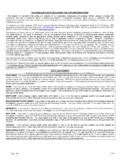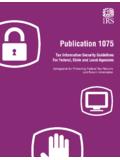Transcription of Effective Investigation Reports . . . Tips to Writing …
1 1 Effective Investigation Reports .. tips to Writing it Right! Ethics, Compliance and Audit Services Judith Rosenberg, Principal Investigator, UCOP Irene Levintov, Principal Investigator, UCOP Copyright 2015 Regents of the University of California 2 Agenda Types of investigations Purpose of the written report Structure of the report Characteristics of a good report Producing and communicating the report 4 What Types of Investigations? Employee complaints, including Discrimination Sexual Harassment Retaliation Suspected IGA Policy/Law violations Health or safety threats Research integrity concerns Audit matters 5 Purpose of the Written report To evidence a timely and impartial institutional response To accurately document the Investigation conducted To provide decision-maker with facts needed to decide the matter To ensure a successful Investigation To best defend the Investigation 7 Protected Disclosure Protected Disclosure means any good faith communication that discloses suspected improper governmental activity (IGA)
2 , or any significant threat to public/employee health or safety 8 Improper Governmental Activity (IGA) Any activity undertaken by the University or a University employee performing official University duties that (1) Is in violation of any State or federal law or regulation including, but not limited to corruption, malfeasance, bribery, theft or misuse of University property or facilities, fraud, coercion, or conversion .. , or (2) Is economically wasteful, or involves gross misconduct, gross incompetence, or gross inefficiency 9 Burdens of Proof Complainant -- more likely than not that: Complainant engaged in Protected Activity (PA) Complainant experienced some adverse employment action (AA) PA a contributing factor in the AA Respondent -- clear and convincing evidence that: Respondent had independent justification for the adverse employment action, or Reasonable belief action was justified 10 Organizing and Writing the report What are the essential components?
3 How should the sections be structured? What should be covered in each section? 11 The Critical Elements The factual issue The relevant policy The evidence The analysis The conclusion 12 Basic report Structure The Beginning Executive Summary Complaint Summary Investigation Summary Conclusion Summary The Middle Factual Background Scope of the Investigation Evidence Considered Analysis of the Evidence The End Findings of Fact Conclusion(s) Sign & Date Exhibits 13 Executive Summary Brief complaint description Policy/rule at issue Investigative mandate Ultimate conclusion reached 14 Allegations Analysis Review initial allegations/ complaint What are the policy requirements you will have to address?
4 Create a report outline on Day 1 of the Investigation 15 Scope of the Investigation What was the matter at issue? What was the scope of review? What interviews were conducted? What other evidence was considered? What investigative process matters should be noted? 16 Consider Scope Creep What are the initial allegations? Did additional allegations came to light during the Investigation ? If so, how should such allegations be addressed? Referred to a separate Investigation ? Included as part of the subject report ? 17 Factual Background Departments or units involved Relevant activities of the unit Employees involved and employee relationships Background facts to the subject allegation or incident Factual issues to be resolved 18 Analysis of the Evidence Acknowledge the positions of each party Describe the evidence in support of each position Weigh the facts Identify the relevant facts Dismiss the irrelevant facts As to disputed facts.
5 Assess credibility 19 Assess Credibility Factors to consider Inherent plausibility Timeline of events Corroborating evidence Actual knowledge Objective factors Avoid behavioral interpretations 20 Reach Your Conclusions Re-state the policy standard for reaching a conclusion, generally substantial evidence in IGA investigations burden of proof in a workplace complaint as applied by the investigator Set out the Findings of Fact that are needed to reach each required conclusion State the Conclusion(s) reached with reference to the applicable policy standard 21 Types of Conclusions Sustained: an allegation is sustained when an Investigation reveals that the evidence satisfies the burden of proof in support of the allegation.
6 Not Sustained: an allegation is not sustained when an Investigation reveals that the evidence does not satisfy the required burden of proof. Inconclusive? Unable to determine? 22 Conclusions An Exercise Preponderance of the evidence suggests that the allegation is true. There is no evidence that the accused stole computer equipment, therefore allegation is not sustained. Preponderance of the evidence suggests that the respondent violated Public Contract Code Section Allegation is substantiated. There is clear evidence that the respondent engaged in more than one improper governmental activity, therefore allegations are sustained. It was determined that there is no sufficient evidence to prove that the accused falsified his timesheet.
7 Investigator was unable to determine whether the allegation has merit. 23 What Makes a Good report ? Does it Satisfy the 3 C s Clarity in language Clarity in overall coherence and logic Clear Documents all aspects of the Investigation Addresses/resolves all issues Complete Direct and succinct Simple and straightforward to read Eschew pretentious verbosity Concise 24 Is it Well-Written? Use appropriate style Adopt the correct tone Be impartial Be professional Avoid common Writing pitfalls 25 Some Writing Pitfalls to Avoid Consider your audience Don t write a screenplay Don t use verbs disguised as nouns Make findings that relate to the relevant policy Do not purport to draw conclusions of law 26 Words Matter Use impartial and neutral verbs Use exactly descriptive verbs Avoid passive tense Be consistent in tense Avoid unnecessary adjectives Readability Analysis Avoid extraneous information Don t forget grammar & punctuation Be Direct.
8 Write Small .. Simplify .. The most valuable of all talents is that of never using two words when one will do. Thomas Jefferson 27 Producing and Communicating the report What draft review should be undertaken? What documents should be attached to the final report ? What precautions should be taken for the electronic version of the report ? Who should get the final report ? 28 Producing the report Review draft By a buddy By counsel/decision-maker The Final report Exhibits/attachments File format Securing the file Delivering the report 29 report Exhibits: All-in .. or Not? Common practice: include as part of the report all exhibits and documents relied upon as exhibits Stand Alone view.
9 Keep all (non-essential) documents and other evidence relied upon in a separate file to be provided to decision-maker as needed but not as part of the report 30 Tip Securing your report File Encrypt your file Use Microsoft s Document Inspector to remove hidden text from MS Word documents Use Adobe Protection Options to secure your Adobe PDF files 31 Communicating the report Transmittal letter Employee complaint matters Final decision-maker Parties and others IGA Investigations Responsible officials Responsible management UCPD (for possible prosecution) 32 Key Takeaways Remember that your Investigation can only be as good as your report of it Begin your Investigation with a exemplar report outline to serve as a checklist for your Investigation Frame the Investigation and your report on the rule or policy at issue Begin the actual Writing of your report with background, scope, and issue statements early in the Investigation Strive to document your factual, timely, and thorough Investigation in a clear, complete and concise report 34 Thanks!
10 Irene Levintov: Judith Rosenberg.
